#AtR
Explore tagged Tumblr posts
Text

#oshungoddess#oshun#santeria#candomble#yoruba#ifa#aesthetic#atr#african traditional religions#orishas#ogun#hoodoo#african spirituality#afro witch#witches of color#west africa#florida water#oxum#keys#yellow flowers#iron#altar#my altar#offerings#blessings
491 notes
·
View notes
Text
On September 10th we venerate Elevated Ancestor, Voodoo Queen of Louisiana, & Saint, Marie Catherine Laveau on her 222nd birthday 🎉
[for our Hoodoos of the Vodou Pantheon]

Marie Catherine Laveau was a dedicated Hoodoo, healer, herbalist, & midwife who, "traveled the streets [of New Orleans] like she owned them", as the most infamous Voodoo Queen of New Orleans.
Marie C. Laveau I was born a "Free Mulatto" in today's French Quarter in what was then, New France); to a mother & grandmother who were both born into slavery & later freed via freedom papers. It is believed that she grew up in the St. Ann Street cottage of her maternal grandmother.
She married Jacques Santiago-Paris, a "Quadroon" "Free Man of Color", who fled as a refugee from Saint-Domingue, Haiti from the Haitian Revolution in the former French colony . After his passing, she became known as "The Widow Paris". She then worked as a hairdresser catering to White families & later entered a domestic partnership with a French nobleman his death. She excelled at obtaining inside information on her wealthy patrons by instilling fear in their servants whom she either paid or cured of mysterious ailments. Although she never abandoned her Catholic roots, she became increasingly interested in her mother’s African traditional beliefs. The Widow Paris learned her craft from a ‘Voodoo doctor’ known variously as Doctor John or John Bayou.
Marie C. Laveau I is said to have intiated into Voodoo career sometime in the 1820s. She's believed to be descended from a long line of Voodoo Priestesses, all bearing her same name. She was also a lifelong devout Catholic. It didn’t take long before Marie C. Laveau I dominated New Orleans Voodoo culture & society before claiming title of Queen. She was the 3rd Voodoo Queen of NOLA - after Queen Sanité Dédé & Queen Marie Salopé. During her decades tenure, she was the premier beacon of hope and service to customers seeking private consultations - to aid in matters such as family disputes, health, finances, etc, created/sold gris gris, perforemed exorcisms. While her daughter Marie II was known for her more theatrical displays of public events, Marie C. Laveau I was less flamboyant in her persona. She conducted her work in 3 primary locations throughout the city: her home on St. Ann Street, Congo Square, & at Lake Pontchartrain. Despite one account of a challenge to her authority in 1850, Marie C. Laveau I maintained her leadership & influence.
The Queen died peacefully in her sleep in her ole cottage home on St. Ann Street. Her funeral was conducted according to the rite of the Catholic Church & in the absence of any Voodoo rites. To her Voodoo followers, she's venerated as a Folk Saint. In² addition to her Priesthood in Voodoo and title of Queen, she is also remembered for her community activism; visiting prisoners, providing lessons to women of the community, & doing ritual work for those in need.
She is generally believed to have been buried in plot 347, the Glapion family crypt in Saint Louis Cemetery No. 1, New Orleans. As of March 1st, 2015, there is no longer public access to St. Louis Cemetery No. 1. Entry with a tour guide is required due to continued vandalism & tomb raiding.
We pour libations & give her💐 today as we celebrate her for her love for & service to the people, through poverty, misfortune, bondage, & beyond.
Offering suggestions: flowers + libations at her grave, catholic hymns, holy water, gold rings/bracelets, money
‼️Note: offering suggestions are just that & strictly for veneration purposes only. Never attempt to conjure up any spirit or entity without proper divination/Mediumship counsel.‼️
#hoodoo#hoodoos#atr#atrs#the hoodoo calendar#conjure#rootwork#rootworkers#ancestor veneration#Marie c Laveau#Voodoo#Voodoo Queens#new orleans#new orleans Voodoo#Vodou Pantheon#Haitian Voodou
449 notes
·
View notes
Text

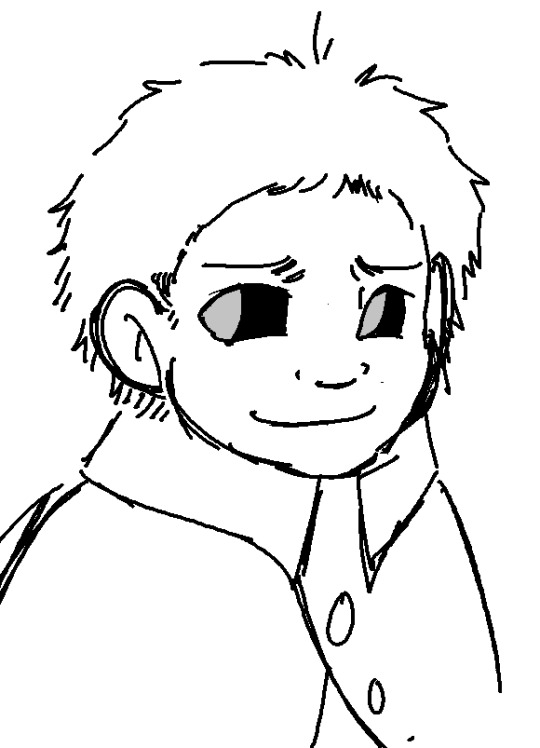
mono
150 notes
·
View notes
Note
Hey Michael are there any positives to William as a parent or was he just the worst all around?
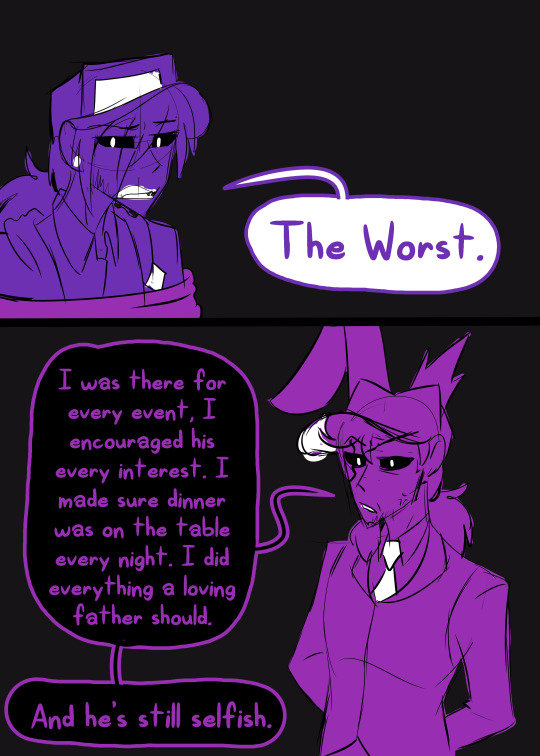
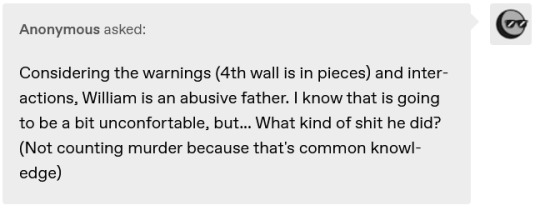


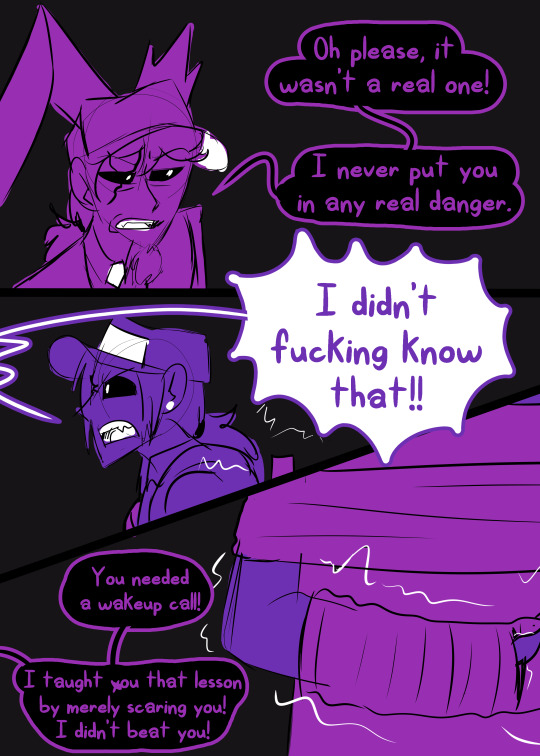
(Been there, done that.)
#fnaf#five nights at freddys#michael afton#mike afton#ask the remnants#fnaf ask blog#william afton#ask#ask blog#atr#fnaf comic#story#story tag#afton family#anon
221 notes
·
View notes
Text




Nic Endo – White Heat
Nic Endo from ATR does noise.
Get it from my Google Drive HERE
47 notes
·
View notes
Text
Caribbean Folk Saints and Mighty Dead: A Precursor
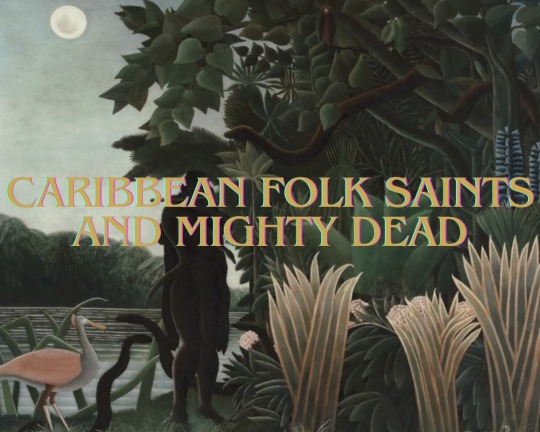
We all have family members who take on an almost Mythic quality after they pass on. They may have been a character in life, or a perhaps a spiritual practitioner. Maybe they were known for their generosity, or lack of it, or their strength or brilliance. Nonetheless, it is someone who, even in death, still makes an impact. In personal practices, we may work with these ancestors for guidance and healing, but what happens when their influence spreads past your family, into the local community or even entire country? This and many other strange circumstances often explain the origin and powers of Folk Saints and Elevated Dead. I will be going into the various Folk Saints and Deified Ancestors of the Caribbean, (including Florida), but before I can do that I need to explain where these spirits come from, and why they are so potent in our everyday lives.
What are Folk Saints and Mighty Dead?
Folk Saints and Mighty Dead are spirits of dead people who were either elevated in life, or became elevated after death. Their elevation often is then connected to their ability to grant various petitions made to them. Some of the Folk Saints I will be talking about were used to disguise other figures who were outlawed by the Colonial government at the time, while others are various figures of marginalized communities who gained sorcerous or otherworldly reputations after death.
Cuba and Florida are Lands of diaspora and syncretism. Many different traditions abound and each tradition has multiple lineages, so the classification of spirits differs depending on the worldview of the person explaining. Some practitioners work within a framework of Catholicism, some use elements and some flat-out reject Catholicism completely for decolonization purposes. For this reason, I have differentiated Folk Saints from the Mighty Dead.
Folk Saints will include those spirits who are worked with in a Catholic context, but are usually not canonized or not at first. On the other hand, the Mighty Dead will include spirits who are venerated amongst Indigenous and African traditions in Cuba as well as the surrounding areas, as to not group them under a title created by Colonizers. If you are Cuban or Caribbean, these Folk Saints and Mighty Dead offer power at a closer degree because they are more proximal to your Spirit Court, and may even already have bonds with them.
It is important to note, spirits like Orisha and Cemí have very specific protocols, manners and taboos when approaching them, so this is best done with the help of a priest, such as Oloricha or Babalawo, or a Taíno Behike. These are not energies you simply feel drawn to and work with. Orisha and Cemi are in some cases Deified Ancestors and others Personified Forces of Nature, among other things. This varies from the Ancestors and Spirits I will be discussing in this series.
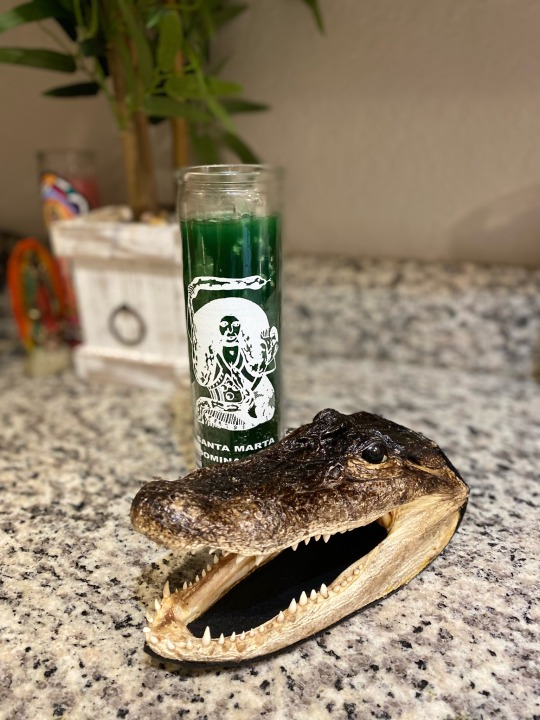
Benefits of Working with The Mighty Dead
Folk Saints and Ancestors give us a closer connection to the divine through their proximity to the Divine and their individual virtues and personalities. As with all spirit relationships, you will get out what you put in.
Folk Saints who are related to the Land you live on, such as Uncle Monday or Bessie Graham for us Floridians, can help to deepen your connection with the local community. They can help you to further your relationship with the Earth and introduce you to other Land spirits.
Spirits related to your Ancestry can help to work through generational issues. Some ancestral spirits, like José Martí or Guamá for us Cubans, are related to ideas of War, Rebellion, and overcoming oppression. These spirits can be worked with for the same pursuits of defeating oppressors in the modern day. Each spirit has a story and is multi-faceted, so it really depends on what your connection is to the Spirit and what you are capable of offering them.
How to Work with Deified Dead
Working with these spirits is individual to each spirit, based on what their heritage is, as well as their personal tastes. When starting out, it’s best to keep things simple. Instead of going and creating an entire altar dedicated to a spirit, begin by praying about it at your Bóveda or ancestral altar. Here, you may find that a spirit is not compatible with your current situation, or doesn’t want to work with you ever! Should the omens be good, however, and you may begin establishing a connection to that spirit Research and talking to other devotees can give you great insight into what a relationship with that Spirit can look like.
My formula for reaching out to these spirits is always different, but I follow basic principles. I always begin with a representation of the spirit, a small offering and a candle. The representation can be anything, from a statue to a printed picture or even just their name on some paper. The offering is in most cases water until the spirit makes other wants known to me, but when a spirit doesn’t take water I offer food or tobacco instead. The candle is something I was taught helps to enhance spirit communication, carrying messages between the worlds. It is helpful to research about whoever you are attempting to communicate with, and if possible you should speak to other practitioners who work with the same Spirit. Often times, this is someone-you-know’s father or grandmother. From here, you should sit with whatever entity you are contacting, allowing yourself to experience a personal relationship with them. I will share individual experiences of what each spirit has been like in practice for me, or people I know, but for beginning this is a good basic way to start out.
I look forward to sharing more about these incredible figures who influence my favorite corner of the world to this day.
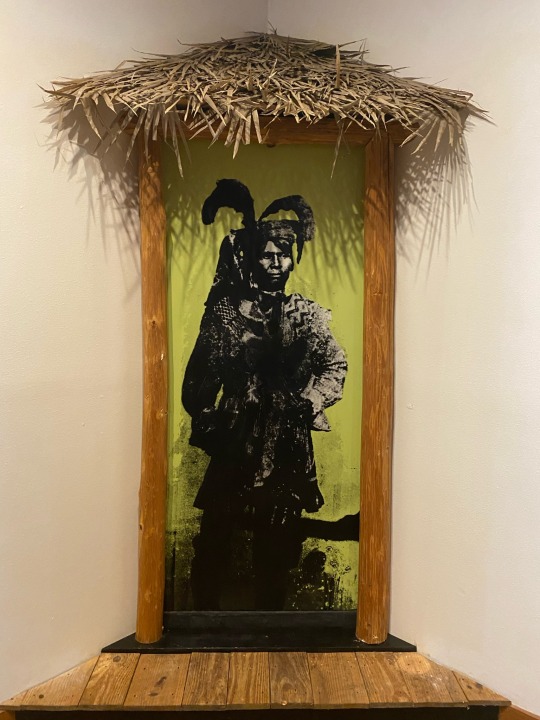
Paz y Progreso 🕯️
#witchcraft#florida#bioregional animism#bruja#brujeria#florida witch#santeria#swamp witch#witch#traditional witchcraft#cubanfolkmagic#cuban#cuba#taino spirituality#taino#folk magic#folk witch#espiritismo#atr#folkloric witch#animism
117 notes
·
View notes
Text


#hanin elias#atr#atari teenage riot#breakcore#breakbeat#breaks#techno#electronic band#electronic music#electronics#electronic#jungle music#jungle#hardcore punk#experimental hybrids#experimental band#experimental music#Experimental#german techno#german bands#women in noise#noise music#noise#noise rock#industrial band#industrial music#industrial#alec empire#electro#music
31 notes
·
View notes
Text

An ATR 42-500 on final for RWY 25 at OPGT
#ATR#42-500#ATR 2-500#passenger plane#regional airliner#commercial aviation#flying#aviation photography#plane
25 notes
·
View notes
Text
youtube
THIS TOOK ME THREE MONTHS AAAAAAAAAAAAAAAAAAAAAAAAAAAAA
IT'S FINALLY DONE
The English version with Stetson's cover is in my channel
Subscribe if you wanna see more content! My youtube is where I post my main stuff OwO!
(audio from Mafumafu and Soraru
All hail Mafumafu)
#poppy playtime#poppy playtime chapter 3#smiling critters#animation#dogday#catnap#capcut#youtube#lower one's eyes#Atr#smilingcritters#flipaclip#AMV#animated music video#parody#digital animation#art#baloon#mafumafu#soraru
131 notes
·
View notes
Text

#books#photography#quality#vintage#black authors#black spirituality#spirituality#hoodoo#black girl magic#black women#beauty#atr
38 notes
·
View notes
Text
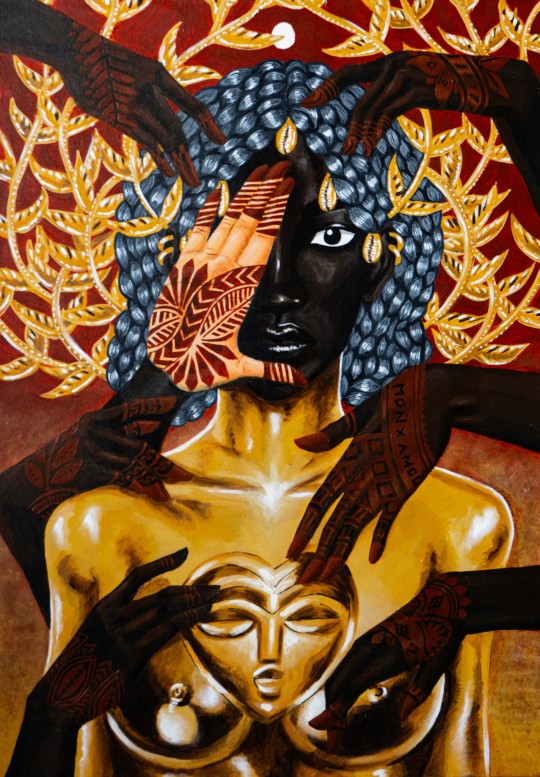
"Djabi", acrylic on canvas, 46 x 65 cm
Instagram : @jenekacy_art
#afro art#west africa#african spirituality#acrylicillustration#acrylicpainting#illustration#mali#beauty#love#protection#africanspirituality#witches of color#bambara#peulh#djabi#henna art#henna#westafrica#atr#contemporary art#africanart#african traditional religions
61 notes
·
View notes
Text

#united healthcare#health insurance is a scam#health insurance#ceo season#ceo#uhc ceo#captainpirateface#get em#people are done#people are sick of this#we will revolt#revolution action#atr#atari teenage riot#bugs bunny#daffy duck#warner bros#revolution#the revolution will be televised#we are angry#I'm mad as hell and I'm not gonna take this anymore#I'm mad as hell#akira the don#network#lets go#bipolardepression#chemicalimbalance#wtf#captainpiratefacelovesyou#sighthsandsoundsofinstagram
23 notes
·
View notes
Text
September 9th marks the 284th anniversary of The Stono Rebellion of 1739✊🏾

When an Angolan brotha called, Jemmy, led a band of 20 slaves into rebellion on the banks of the Stono River in Charleston, S.C., which put unprecedented fear in Whites. It was because of this uprising that laws were enacted that outlawd the enslaved from learning how to read, gathering in groups, & growing their own food. Thus, making it one of the most significant rebellions in the history of the U.S. colonies.
Jemmy & the rebel band marched southbound on a road toward the river, carrying banners that proclaimed their war very, "Liberty!". Their numbers swelled with more enslaved women and men as they went. By nightfall, 100 rebels had joined the cause. They broke into a local firearms store, arming themselves with guns & ammo. As they marched, they killed every overseer in their path and forced any reluctant slaves to join them.
From there the band marched toward the house of a Mr. Godfrey, where they burned the house & killed Godfrey and his family. It was just shy of dawn when they reached Wallace's Tavern. Because the innkeeper at the tavern was kind to his slaves, his life was spared. The White inhabitants of the next several houses in their path were all slaughtered. Those enslaved by a Thomas Rose reluctantly joined the rebellion, but not before hiding their slaver - of which they were later rewarded for. Still, many more rebels gladly joined the cause. By this point, a Lieutenant Governor Bull eluded the rebels & rode on horseback to spread the alarm. Once the band reached the Edisto River, Whites colonists set out in armed pursuit. Shots were exchanged across both lines. By dusk, about 30 rebels had fallen & at least 30 more had escaped. In the end, most rebels were captured over the next month, then executed. The remainder were pursued and captured over the following 6mo - all except 1 who remained a fugitive for 3 years. The few survivors were sold off to plantations in the West Indies.

The immediate factors that sparked the uprising remain uncertain. Many rebels knew of small groups of runaways had made their way from SC to FL, where they had been given freedom and land. There was also an ongoing malaria epidemic surging across SC. Ultimately, this unprecedented act of rebellion demanded unprecedented legislature. The European colonists finalized a Negro Act into law which aggressively limited the privileges & movement of the enslaved. No longer would slaves be allowed to grow their own food, assemble in groups, earn their own money, or learn to read. Some of these restrictions had been in effect before the Negro Act of 1740, but had not been strictly enforced. This also resulted in the forced indoctrination of slaves into Christian schools systems.
Let us remember Brother Jemmy and those who fought, willingly or not, against the colonizers. Their sacrifice may have set a great legal precedent in European colonizer politics, but it set an even greater one that would spark many fires and fan many more flames of rebellion, war, and freedom. Every step taken from this moment onward was a necessary one to achieve our "freedom" as we experience it today.
We pour libations of water (especiallyfrom the Stono River), speak their names, & offer prayers toward their elevation.
‼️Note: offering suggestions are just that & strictly for veneration purposes only. Never attempt to conjure up any spirit or entity without proper divination/Mediumship counsel.‼️
#hoodoo#hoodoos#atr#the hoodoo calendar#atrs#the Stono Rebellion#stono river#Angola#Angolan#slave rebellion#south carolina
380 notes
·
View notes
Text
The Hoodoo That You Do
Hoodoo first and foremost is a closed practice.
Within a western audience, the concept of a closed practice can be rather challenging for many, as it runs entirely contrary to the notions we are brought up believing surrounding religion in the West.
Socio-culturally, religion in the West has evolved under the mantle of Christendom. This evangelizing religion characterized by its soteriology(savior ideology) , ease of access, and proselytizing habits is open to all, radically so. All you need is to accept Christ as your personal Lord and Savior, and live righteously according to the Bible to secure eternal salvation. In many respects, Christianity uniquely conquers the mystery religions of old, characterized by their distinctive intimacy with the divine, secrecy and ritual, and subverts it, by making it universally open to all and actively telling you about it.
This line of thinking regarding "closed practices" can also be difficult with many western minds that have had extensive influence from movements such as the “New Age” movement, which seeks to bring together unrelated material spiritual identities under one umbrella.
Many people in the “New Age” movement have been largely influenced by the writings of the Theosophical society, which were some of the first writings on Dharmic religions available to a broad audience in accessible languages in western countries. This means that many of these individuals ideologically do not believe in the idea of culture since they eschew the cover of self, many believe we reincarnate across familial lines, species and even galaxies, fall prey to solipsism and claim that they themselves are the only real thing that exists, therefore everything is open to them, or purport an intrinsic universal connection through the Jungian collective consciousness that makes all things open to them. Having a unique gnosis dependent on your religious affiliation is normal and expected, using it to harm others is not.
Similarly, Christianity undermines the concept of ethnic religions and cultural religions which are predicated upon being born into them, or having immediate access into certain respective belief systems for validity in practicing them. Finding Divinity in the Christian tradition has nothing to do with where you were born, who you are or how you were brought up, but rather, is entirely up to ideology, practice, and a consistent theme of universalism.
However, as stated prior, due to ethnic and cultural religions being experiential, they are much more tied to a way of life, being, and a contextual identity in order to operate within the cosmological framework. This can be ancestral; do you descend from the founders of the tradition, are you connected by blood in some significant way in recent history? Land-based, i.e venerating a particular river, mountain, cave etc. And lastly, communal, do you speak the liturgical language of the religion, do you eat the same foods, do you understand the offerings? Many ADRs fall into the aforementioned pattern above. Many Hougans and Manbos will tell you that there are Lwa(Intercessory divinities in Vodou/Voodoo) that can only be summoned on Ayiti, making it a uniquely land based practice, and while in Santería, Boromú, an Orisha associated with the desert,and dryness, all but disappeared in lush and tropical Cuba. Most, if not all religions do start as ethno-religions, and many of them still have vestiges of these ideas present within them, and despite the open and universal evangelism of Christianity, even its spiritual practices fall into some of the land specific beliefs and functions mentioned previously.
It is in this contextualization of land, self and identity, that we begin to understand Hoodoo as not merely a “folk magic” practice, but a Magico-Religious tradition uniquely conjoined with the cosmological spiritual experience of Soulaani people in the United States. Hoodoo, like many American ADRs, is plantation religion, and as with the mentioned ADRs above, Vodou and Santería respectively,is syncretist in nature and a highly Africanized interpretation of the Christian faith which was violently enforced upon the enslaved.
Hoodoo historically is a belief system that was foundationally built as a form of resistance to European oppression, violence and abuse. With an emphasis on ancestor veneration, figures such as Nat Turner, Harriet Tubman and Frederick Douglass are heralded as elevated community ancestors, whilst figures such as High John The Conqueror, a mythic African king who could outfox any Slaver or false master, is deigned a powerful, worthy, and venerable Spirit.
The cosmology of Hoodoo, while being deeply Christian, is Animistic in nature and boasts a large host of Land and Place spirits with whole identities and person-hoods. Some of these spirits are “Elevated Ancestors” similar to the saints of Orthodox and Catholic traditions, while some of them are entirely natural in origin such as Simbii or Samunga.
Hoodoo, similarly to the American south from which it originates, exists equally in a Protestant and Catholic context, and also incorporates Native American wisdom and land knowledge into its Theological foundation because of Indigenous admixtures in Black populations, and vice versa, as can be seen by the Florida Seminole tribe with it's high afro-indigenous population to this day and many more.
With its context, it is no wonder that people feel that Hoodoo is an open practice, by its very origin, it is an act of black labor, meaning, it's meant to be exploited. All black labor, be it intellectual, physical, emotional or in this case, spiritual, is an open and free resource that can be cheerfully parasitized from by a broader audience, without acknowledging its history, origins or foundations. This unfortunate reality extends even beyond the Black American experience and universally unites the Black diaspora in imperialist or colonial states worldwide. When researching the origins of certain foods, dances, customs and ideas, it will be difficult to find the genuine full hearted acknowledgement of the enslaved and their contribution to broader knowledge and culture, this is the case in Latin America as well in both material and spiritual culture.
The colonial state chooses what is “Everyones” or rather, “American” and what is “Black” at any given time, and can choose to revoke and review these designations at will. A particularly clear example is Jazz music.
What once started as the herald of reefer madness, debaucherous devil music and depravity, has become the backdrop of urban luxury, sophistication and wealth. This is of course after the domestication of jazz at the hands of predominantly white musicians, who made it more palatable to the broader audience and it's popularization among the rich and famous.
Another example is soul food. What many consider to be “southern cuisine” is uniquely Soulaani in origin, however, due to the overall positive reception, accessibility and good reputation of soul food it became subsumed into the greater American identity not as a black invention, but an American one.
Similarly, Hoodoo received much of the same treatment in the late 80s- 90s. Instead of the lowbrow superstitions of slaves, Hoodoo was rebranded as a distinctly American “hodgepodge” practice, meant to appeal to aesthetics surrounding pastoralism,the rustic rough and ready, and a peculiar edginess, ethnic enough to bite but close enough to home not to leave a scar, after all, Hoodoo was never African according to Ross, and Hoodoo “Authorities” such as Yronwood “The earliest usage of the word “hoodoo” is connected with Irish and Scottish sailors, not African slaves, and may be a phonetic pronunciation of the Gaelic Uath Dubh (pronounced hooh dooh) which means evil entity or spiky ghost. In the mid 19th century, cursed, abandoned “ghost ships'' were called hoodoo ships or were said to have been hoodooed.”(2021,Ross).
The ability for the colonial machine of the U.S to change and claim things from being one thing, and subsume it into a greater American identity without any of its former history, or identity, is one of the things that makes colonial nations so distinctly villainous in the continued exploitation of marginalized identities. Such as Britain's National dish being Chicken Tikka Masala without even acknowledging the incredibly dark history of the East India Company and its dark impact on the whole of the Indian subcontinent. This consumption of identity is the reason why the black American appears to be “without culture”, and why Black Americans themselves can occasionally feel bereft of a unique identity. Often noted by others across the Black diaspora, Black Americans are often the butt end of everyone's jokes from the Caribbean, Latin America and Africa itself. This “stateless” identity sometimes displayed by Black Americans is by design by the colonial state, and a symptom of religious displacement and spiritual abuse at the hands of said colonial powers.
This powerful and calculated form of psychological warfare and its effects can be seen in the likes of Hebrew Israelites who claim to be the original Jewish diaspora, Kemetics who claim to be the original Egyptians and those who claim to be the original Native Americans. This speaks to a desperate longing to belong to something that goes back centuries, that is ancient, and worthy and powerful, none of them wanting to claim the legacy of slavery and its ramifications. With many Black Americans struggling to accept the lived history of chattel slavery, who will proudly embrace this “plantation religion”?
With these contributing factors, Hoodoo can come across as being either a failed attempt at reconnection conceived in the minds of desperate African Americans, a made up ahistoricism (as is often asserted in the case of Voodoo in Louisiana) or a genuinely all American folk practice open to all with no authority, order, or true history.
In fact, referencing a broader global view of African Americans, their customs, practices and identity,a global audience inverts the name into American Africans. A culture and identity that is a product of the eurocentricity and whiteness around it. America appears to be the land of “The Whites” and a “Second Europe” in public perception. However, many of these narratives come from individuals who have either; A. Never set foot in America or B. Decided that they would base all their perceptions off of an experience they had on a trip they took to Greeley Colorado in 2009, and movies. Neither of these are accurate as the American identity is not homogenous.
Hoodoo, while originating in the American South, is a land-based spiritual practice. Subsequently, it has evolved tremendously as it made its way Westward and North among the black diaspora itself. All spiritual practices, particularly land based practices, are beholden to regionalism. Regionalism is the antithesis of homogeneity. It is reflexive to categorize the gamut of all things with “American” origins as one homogenous mass, but this is both intellectually and materially disingenuous. All ADRs are regionalist, and this alone creates a dramatic difference in said practices.
Take for instance the various emanations of Palo, with four major denominations, Monte, Kimbisa, Briyumba and Mayombe. These four distinct Theological traditions evolved separately, largely in part because of geographical differences and different leadership. These seemingly subtle differences evolved overtime into hallmarks of an identity in how each sect handles spirits, the spirits they venerate, language(s) used, and major beliefs pertaining to cosmology and world structure. Notice however that all of these originated on the Island of Cuba. Cuba is roughly 750 miles long and 60 miles wide, driving from Denver Colorado to Billings Montana is 693 miles and takes around 10 hours to drive, while it typically takes only one hour to drive around 60 miles. The variety of spiritual beliefs in one tradition in a stretch of 750 miles is profound, and this isn't even taking into account the other traditions on the island, so why would we expect it to be different in the United States?
Which leads me to the question, what is the Hoodoo you do? Do you know its region, its history, its spirits? Just as there isn't a generic “Palo” tradition, or a Generic Vodou/Vudú/Voodoo, which also boast a robust number of lineages, most notably Tcha Tcha and Asogwé, there is not a “generic” Hoodoo, and the question becomes less about whether or not it's closed(it is), and more about it's cultural relevancy. The Hoodoo of a third generation New Yorker is going to look wildly different from the Hoodoo we see from a third Generation Californian, and let's add a caveat, the Hoodoo you see from a third generation Californian in the Bay area is going to be different from the Hoodoo from a Los Angeles Hoodoo, because of admixture, geography, and exogenous and endemic cultures in the region. In that same vein of inquiry, do you draw your lineage from the Baptist tradition of Churches, AME, Catholic, African American Spiritual tradition? All of these differences make for a different practice, and different structure.
Among the variations and differences in the Hoodoo tradition of the U.S also comes differing and various cultural attitudes to Hoodoo itself. In the broad Americas(the Caribbean and LATAM Included) the practice of banning and criminalizing Black and Indigenous spiritual practices was incredibly common and could be as dire as even leading to an individuals death “After emancipation, many countries in the Western Hemisphere passed new legislation attempting to suppress the religious practices of the formerly enslaved under the guise of “civilizing” their populations. Countries like Brazil, Jamaica, Cuba, and Haiti enacted laws that prohibited persons from engaging in “superstitious” rituals, fortunetelling, vagrancy, and similar practices. In the United States, African American herbalists and sages (whom the media described as “voodoo doctors”) were also arrested for providing medico-religious and divination services. However, once again, the U.S. government deployed generally applicable laws to suppress these practices; they did not craft new legislation to target the “superstitions” of the formerly enslaved. These individuals were charged with contravening laws against obtaining money by false pretenses, mail fraud, practicing medicine without a license, and related offenses.”(Boaz, 2017). Because of this, black America did their best to disassociate with “superstitions” and “barbaric” customs to avoid further discrimination and being targeted. If you went up to a black elder and asked them what “Hoodoo” was, they'd probably slap you in the gums and call down Holy Ghost fire upon you and yours. It wasn't until 1996 that the American Indian religious freedom act was codified into law after years of indigenous communities enduring the same discrimination as Black ones for alternative spiritual customs and traditions could finally safely practice their own religious and spiritual customs without fear, and these attitudes still linger in both communities respectively.
With all that being said, the question remains. Why must it be Hoodoo that you do? Were you adopted into a family that lovingly shared it with you from the time you were young to now? Did you break bread with these people, do you fight for their liberation with every breath? Do you really think being black in a “past life” grants you access to the trauma you most likely care very little about in this present one?
Magico-religious folk customs are a dime a dozen, many, open! Some closed. Hoodoo however, is contingent upon the social memory of slavery, oppression and a fight for justice. When putting the spirits to work, do you do so with a spectral whip in your hand, and the entitlement to Black bodies and Souls of those who came before you? The joy of learning and spiritual specificity is that you can find a practice you resonate with out of the multitudes that litter the masses of the American continent that may be socio-culturally relevant to you. Such as Italian stregheria which is prominent in some parts of upper Appalachia and New York, Ozark and Appalachian granny magic, Cajun Traiteur, Spanish American Brujería of the Southwest (as in SPAIN),Pennsylvania Dutch Braucherei, there are even Cunning folk practices associated with the Mormon church and Utah. Some of these despite being of European American Origin, are also closed because they are experiential.These are all uniquely American in nature, this is excluding places outside of the U.S who also have a multitude of open mystical practices, such as Ancient Egyptian Heka, or Hellenic Göetia, none of them with the baggage of Indigenous and Black trauma as an aesthetic.
Ultimately, everyone will do what they want and that's just a fact of life, I however hope this helps you stop and think of the damage you do to your Black and Brown siblings whose ancestors died for the right to pray to a God that looked like them when you insist on the right to access to BIPOC labor spiritually,mentally and physically.
#hoodoo#spiritualism#african american spirituality#soulaan#espiritismo#atr#african traditional religions#african diasporic religions#vodou#vudu#voodoo#santería
73 notes
·
View notes
Note
Did william and mike live together for a while? What was their relationship like?
Did mike change much during that time




(Runaway Child)
#william afton#mike afton#michael afton#fnaf michael afton#fnaf#ask the remnants#fnaf ask blog#fnaf comic#ask#ask blog#atr#story#story tag#afton family#micheal afton
262 notes
·
View notes
